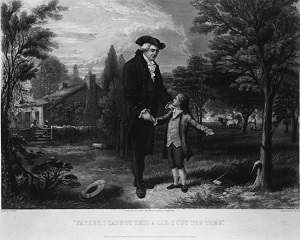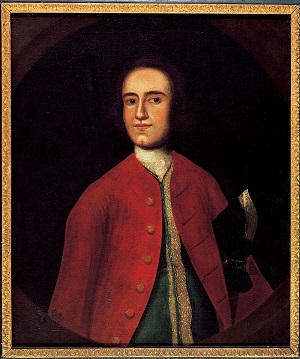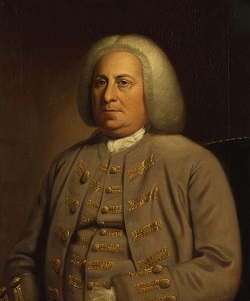George Washington: The Soldier Through the French and Indian War
Legend has it that George Washington's father discovered the child's military bent when he was a small boy and gave him a toy sword, which greatly delighted the pint-sized future Commander-in-Chief. While this tale is probably as tall as the cherry-tree fable, it is true that Washington's military aptitude was nurtured from a young age. His early years in Virginia were infused with a military atmosphere as troops were rasied and trained to be send to the West Indies to combat the Spaniards. Numerous members of his family, including his grandfather and two of his half-brothers, were also military men.
Lawrence Washington, George's half-brother, 14 years his senior, had been commissioned captain in the contingent that sailed in 1740 to join the combined expeditions of Admiral Vernon and General Wentworth. Little 8-year-old George may well have thrilled with excitement and admiration for his brave older brother as he and his comrades departed for war.
The love of military affairs did not abate and pass as most boyish enthusiasms do, but developed into a fixed interest which was strengthened when Lawrence returned two years later, and then became adjutant of his district in Virginia with the rank of major. Having inherited the plantation on the Potomac which he renamed Mount Vernon and taken himself Miss Anne Fairfax to wife, Lawrence Washington retained his interest in both military and naval matters.
Some of Wahington's schoolwork shows an unusual grasp of mathematics. As Washington biographer Charles Moore describes it:
The one devoted to Mathematics exhibits a wide range of subjects combined with sureness and accuracy in working and clearness and neatness of presentation. Few graduates of colleges today, unless they specialize in mathematics, become as well trained in that subject.
In 1752 Virginia Governor Robert Dinwiddie appointed George Washington a district adjutant of the militia, with the rank of major, though he was a mere twenty years old, a testament to his natural military aptitude.
By 1753, territorial disputes in the Ohio valley had greatly strained relations between France and England. Governor Dinwiddie, under orders from England, prepared a letter for the French commander which he entrusted to Major Washington for delivery. Washington was tasked not only with delivering this letter of vital diplomatic importance, but also with providing as much military intelligence as possible, should diplomacy ultimately fail (which, of course, it did).
Major Washington began his journey on October 3, 1753. returning on January 16, 1754 with a reply from the French and detailed report of his observations for Governor Dinwiddie. Preparations had already been begun by the Ohio Company to build a fort at the junction of the Allegheny and the Monongahela Rivers, on the site of a trading post established by the English merchant, William Trent. The regiment recruited to construct and man this fort (Fort Prince George) was commanded by Colonel Joshua Fry. On March 15, 1754, Washington was commissioned lieutenant colonel as second-in-command of the fort, but never got the opportunity to fill his appointed role. While en route to his assignment, Washington learned of the fort's capture by the French, who built a larger structure on the site, naming it Fort Duquesne.
The French and English were now on the threshold of war, though this would not be officially declared until 1756. Washington continued his march and held parleys with some of the local natives, hoping to win them as allies against the French. On May 28 he attacked and captured a reconnoitering French force, in the first major battle of what was still an undeclared war. After the battle, Washington had his troops construct a fort to hold the valuable strategic position they had just won, naming it Fort Necessity. The English didn't hold it long. On July 3, Washington surrendered the fort to the French after a pitched battle. He had put up a valiant fight and was permitted to continue his march back to the Potomac. This was the only time he ever surrendered.






